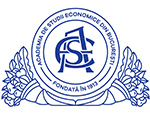Articles on Issue Theme

Ada MARINESCU
Universitatea din Bucureşti
We will discuss in this paper the relation between natural selection and altruism. While at the individual level, the altruistic behaviour reduces the fitness of an individual, at group level the behaviour of altruism produces as result a better adaptation to the environment. In this way, only altruism can contribute to evolution. We will present different perspectives on altruism, regarded on levels of selection and also the difference between biological and psychological altruism. Biological altruism is mainly related to reproductive fitness and success, while psychological altruism implies the existence of an intention to help others. Kin selection and group selection explain altruism from the point of view of inclusive fitness. We tend to help close relatives because our altruistic genes are thus spread in the next generations. Another theory explaining altruism is reciprocal altruism, which is related to the tit for tat strategy and cooperation. We argue that people are actually not selfish individuals, but they are individuals who act socially and prefer to cooperate rather than follow a strict selfish course of action. The emergence of a selfish individual within a group of altruists will endanger cooperation, which will soon disappear, but if we have strict rules for excluding free-riders from social groups, cooperation is re-established because individuals have learnt that cooperation is the most convenient behaviour.
ŒCONOMICA no. 3-4/2016
Keywords: altruism, cooperation, selection, evolution
JEL: C71, D01, D64
On Altruism in Economic Behaviour. Price Equation [Asupra altruismului în comportamentul economic. Ecuaţia Price]
Select Issue:
Archive
Octavian-Dragomir JORA
Academia de Studii Economice din Bucureşti

Mara Andreea TUDOR
University of Chicago

Cătălin MURARAŞU
Academia de Studii Economice din Bucureşti

Ramona Iulia DIEACONESCU
Academia de Studii Economice din Bucureşti

Maria GHEORGHE (NIŢU)
Academia de Studii Economice din Bucureşti

Sorin-Nicolae CURCĂ
Academia Română

Revista ŒCONOMICA

Authors

